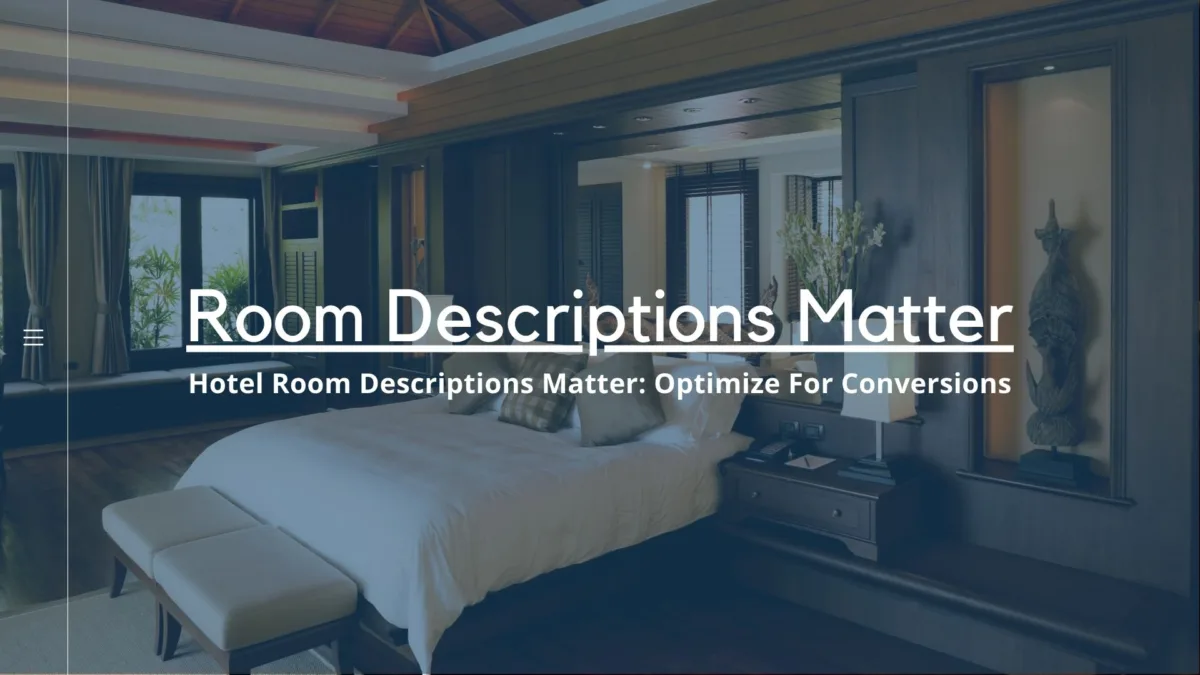Hotel Room Descriptions Matter: Optimize For Conversions

Super Guru Guide | April 2023 Edition – FREE Download
April 4, 2023
Upselling Unleashed: How The Modern Hotel Technology Stack is Maximizing Revenue
April 12, 2023When it comes to booking a hotel room, the decision-making process can be complex and multifaceted. As a hotelier, it's your job to make that decision as easy as possible for your potential guests. One of the most important ways to do this is through optimizing your hotel room descriptions for conversions.

Hotel room descriptions are not just about providing information to potential guests, they are also a powerful tool for upselling. Upselling is the practice of encouraging guests to purchase a higher category of room or additional amenities than they initially intended to, thereby increasing revenue for the hotel.
Effective room descriptions play a crucial role in upselling. By highlighting the unique features and benefits of each room type, you can entice guests to upgrade to a higher category of room. For example, if you have a suite with a private balcony, you could describe it as a "private oasis with stunning views" to appeal to guests who prioritize privacy and luxury.

Another way to use room descriptions for upselling is by emphasizing the value of add-on amenities. For example, if you have a room with a spa bath, you could highlight the benefits of a relaxing soak after a long day of sightseeing. If you offer a breakfast package, describe the delicious breakfast options and the convenience of starting the day without having to leave the hotel.
Upselling through room descriptions is not just about making a sale, it's also about enhancing the guest experience. By highlighting the benefits of a higher category of room or add-on amenities, you are providing guests with a more personalized and memorable stay.
It's important to note that upselling through room descriptions should be done tastefully and without being pushy. Avoid using high-pressure tactics or overpromising on amenities that may not meet guest expectations. Instead, focus on providing accurate and enticing descriptions that showcase the value of upgrading or adding on to a guest's stay.
In conclusion, effective room descriptions are not just important for providing information to potential guests, but also for upselling higher categories of rooms and additional amenities. By highlighting the unique features and benefits of each room type and add-on amenity, you can entice guests to upgrade and enhance their stay, ultimately increasing revenue for the hotel while providing a more personalized guest experience.
5 Tips to Enhance Your Hotel Room Descriptions
-
Identify your target audience: Before writing your room descriptions, consider your target audience. What are their preferences and needs when it comes to a hotel stay? Knowing your audience will help you tailor your descriptions to their interests.
-
Be descriptive: Use descriptive language to help potential guests visualize the room and the experience they will have while staying there. Avoid using generic terms like "cozy" or "comfortable" and instead use specific adjectives that convey luxury, comfort, and exclusivity.
-
Highlight unique features: Each room type in your hotel is unique and has its own set of features and amenities. Highlight these unique features in your descriptions to help guests make an informed decision about which room type is right for them.
-
Use high-quality visuals: Visuals are crucial when it comes to showcasing your rooms. Use high-quality images that showcase the room's features and amenities. You can also use videos or 360-degree virtual tours to give potential guests a better sense of the space.
-
Include a call-to-action: At the end of each room description, include a call-to-action that encourages potential guests to book now. This can be a special offer, a limited-time discount, or simply a reminder to book directly on your website for the best rates.




